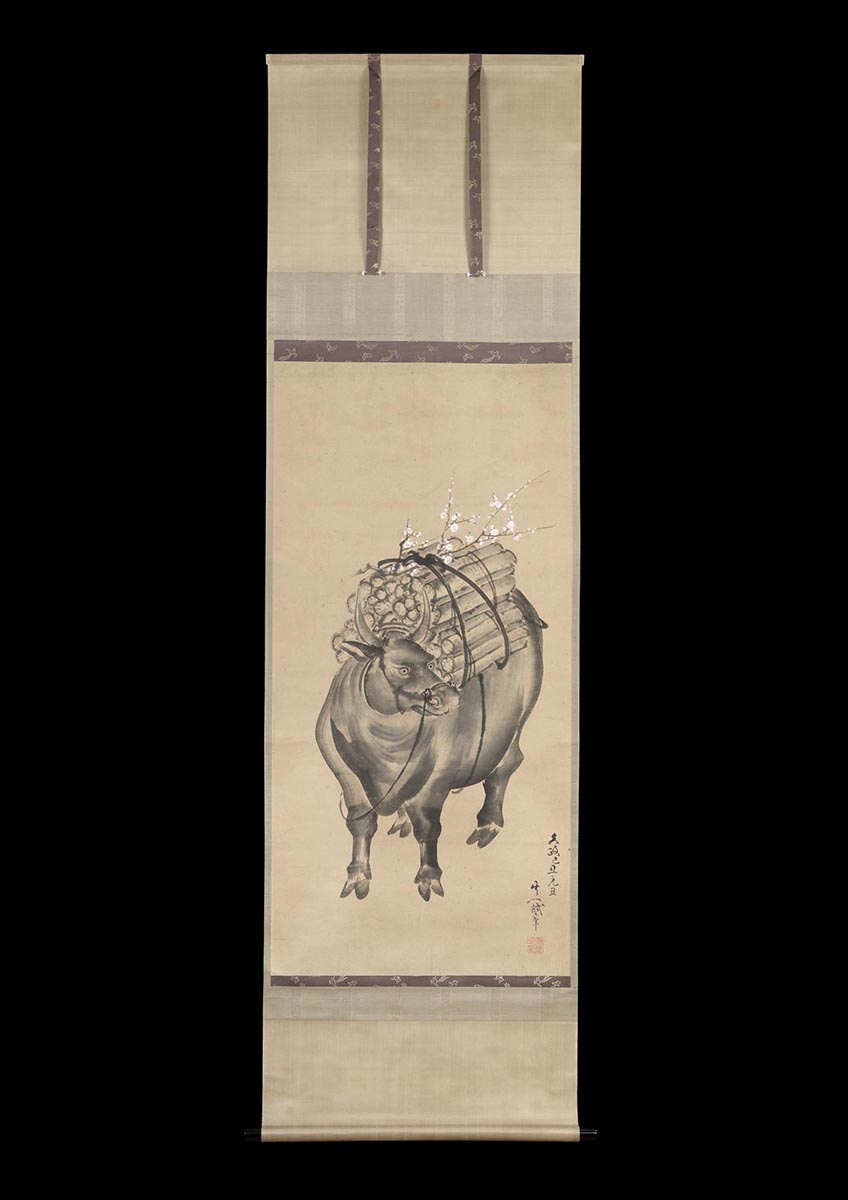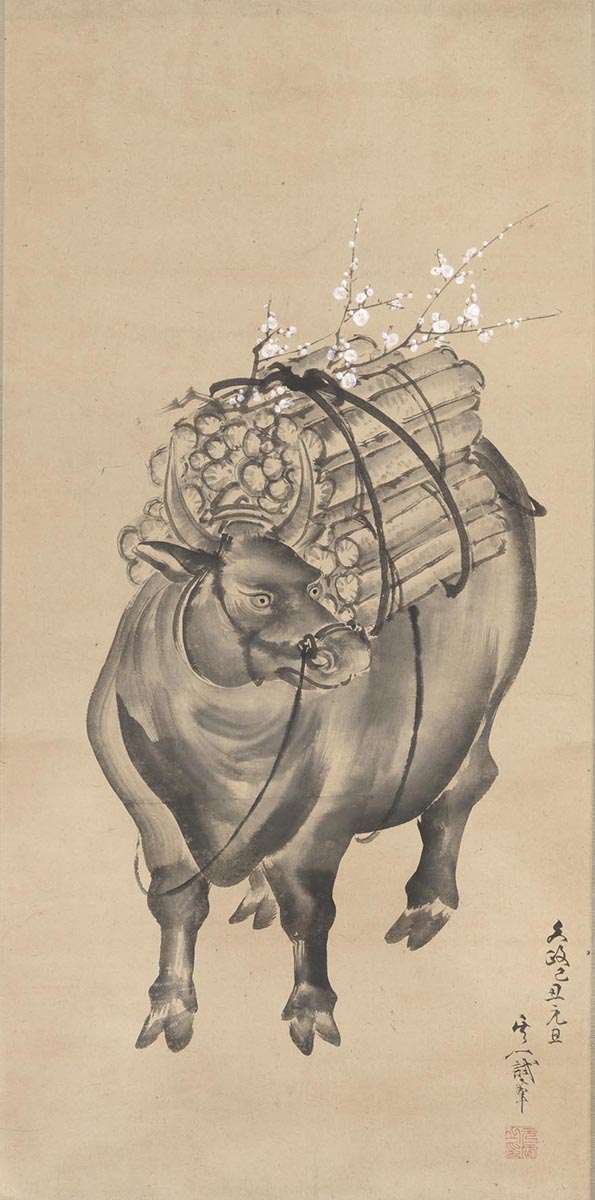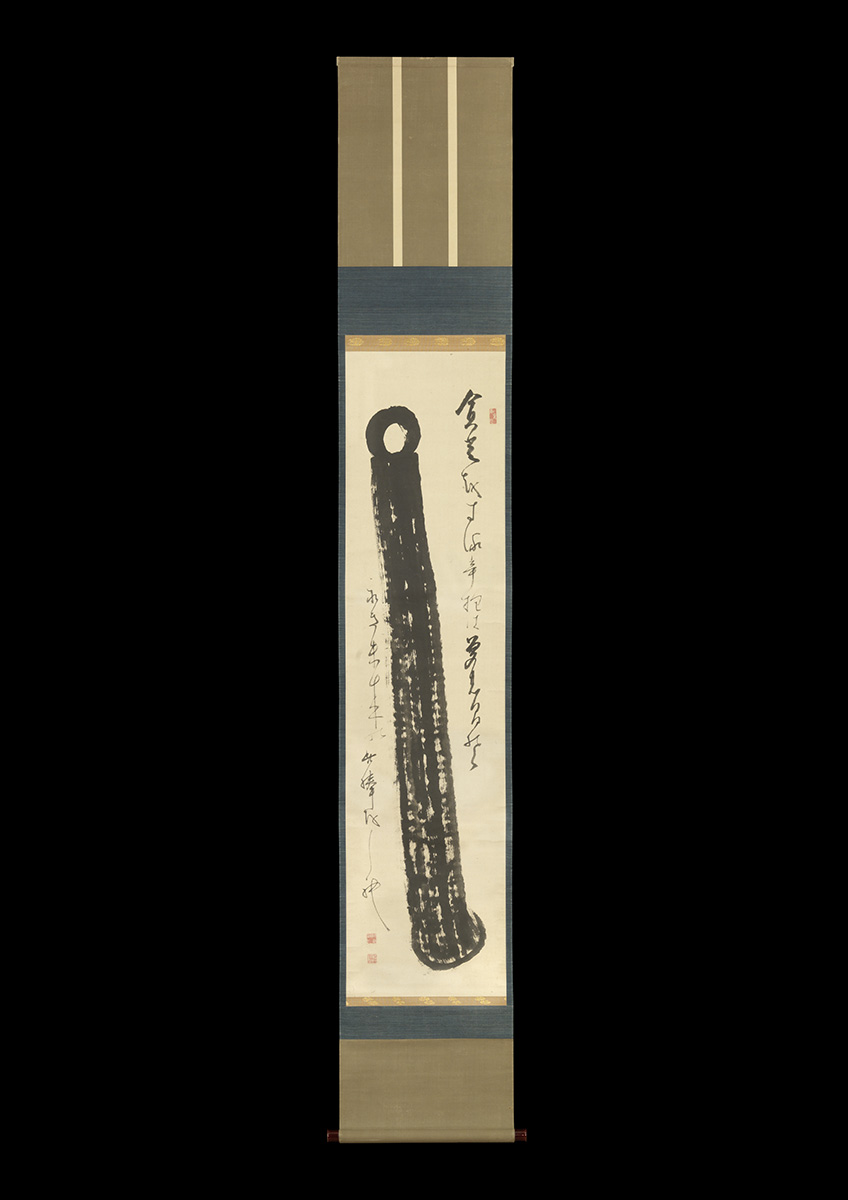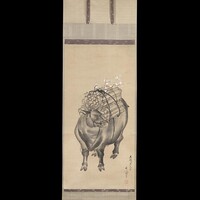
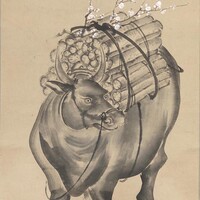
- Contact Us
-
Material
Ink on paper
-
Size
H.106cm (186cm), W.51cm (54cm)
-
Period
1829
Description
"Ox and plum flowers" by Suzuki Kiitsu (1796-1858)
Japanese scroll painting
Signature "Painting at the New Year"
Dated : The 1st of January, Bunsei TSUCHINOTOUSHI (1829), end of the Edo period, 19th century
Suzuki Kiitsu was a pupil of Sakai Hōitsu (1761-1828) who was the founder of the Edo-Rinpa School.
The plum flowers on the animal are an auspicious symbol, often used to celebrate the New Year in Japan. Kiitsu dated this painting to "Gantan", New Year's Day, with his signature.
The ox was the animal for 1829 within the sexagenary cycle, and he obviously selected this subject to celebrate the New Year. He was 32 years old when he painted this work, and the fact that it is dated provides valuable information on the progress of his career as a master painter.
Japan’s relationship with the ox is rooted in Buddhism. The animal is represented in texts, statues and other religious imagery and celebrated in events throughout the year.
According to Mikael Bauer, an assistant professor of Japanese religions (Buddhism) at McGill University, the ox presented in Buddhism and Japanese Buddhism is derived from earlier images in Daoism.
In Buddhism, he says, the ox represents “Buddha nature,” the fundamental nature of all beings that includes the assumption that anyone can gain enlightenment.
“You often see images of ox-herding in Japanese Buddhism, where the ox herder represents us — struggling, pulling the ox on a path of religious praxis,” he says. “One could say this is our path, our life, on which we have to realize that we already possess Buddha nature.”
It was not unusual for animals to be used to convey Zen Buddhist philosophy, but perhaps none are portrayed so positively as the ox.
